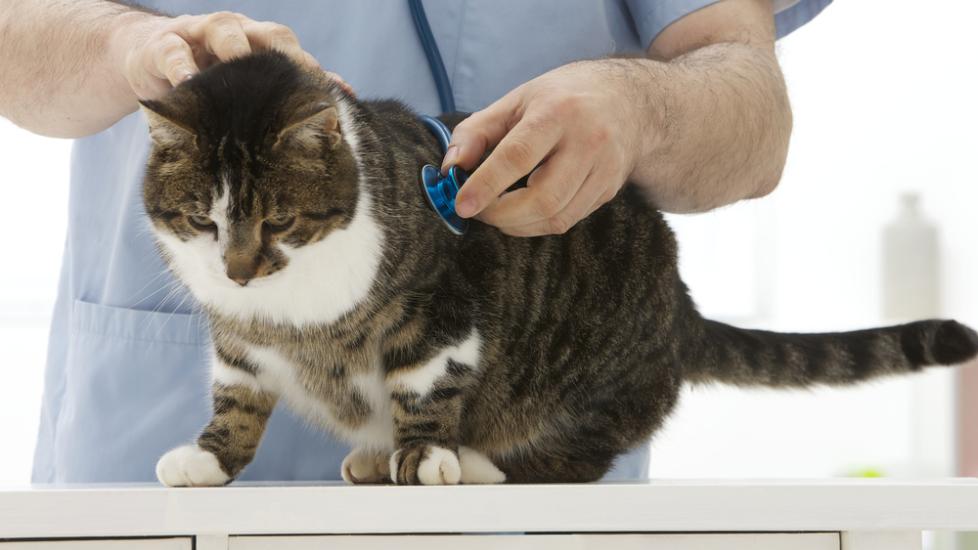Particles in the Urine in Cats
Cylindruria in Cats
Particle matter in the urine may indicate that there is a primary kidney disease, or that there is a systemic disorder that is affecting the kidneys secondarily. The medical term for this condition is cylindruria, and it is characterized by an abnormally high amount of particle matter (casts) in the urine sediment. If there is particle matter in your cat's urine, you will need to have a urinalysis done within two hours of excretion, since the casts will typically dissolve after two hours.
Causes
Listed below are several possible conditions that would affect the body or its organs in such a way that it responds by dropping excess particles into the urine.
Nephrotoxicosis (toxins, both chemical and medicinal, that affect the kidneys):
- Antifreeze, grape/raisin ingestion, excessive calcium in the blood
- Non-steroidal anti-inflammatory drugs (NSAIDs)
- Intravenously administered radiocontrast agent, used in diagnostics
Renal Ischemia (conditions under which the normal flow of blood to the kidneys is blocked or restricted):
- Dehydration
- Decreased blood volume
- Low cardiac output (e.g., congestive heart failure, cardiac arrhythmia [heartbeat irregularities], or pericardial disease [disease of the sac that encloses the heart])
- Renal vessel thrombosis (coagulation, or clotting, of blood in the vessels that feed the kidney and surrounding area)
- Hemoglobinuria - protein hemoglobin, the oxygen carrying pigment that makes the blood red, drops into the urine and is also found in high concentrations in the kidney
- Myoglobulinuria - migration of globulin (blood plasma protein), to the kidneys, excreted in the urine
Renal (kidney) Inflammation:
- When the kidney is inflamed – swollen and irritated – the kidneys drop protein and red blood cells into the urine
- Infectious diseases, such as Rocky Mountain spotted fever, can cause the kidney to become inflamed and drop particles into the urine
Glomerular Disease (Arteries branch inside the kidneys into clusters of blood vessels, each of which is called a glomerulus. The glomerulus serves as a filtering unit in the kidneys, removing waste matter from the blood):
- Glomerulonephritis describes the inflammation of the small blood vessels in one or more of the glomeruluses, it is presented by hypertension, swelling (edema), and blood protein deposits
Amyloidosis:
- A condition resulting from proteins, called amyloids, that have been altered to take on an insoluble form and have deposited themselves into organs and/or tissues
Diagnosis
In order to reach a diagnosis, your veterinarian will want to know whether your cat has been exposed to any of the toxins or drugs mentioned above.
A closer analysis of the casts in the urine will give your veterinarian some clues as to what is causing this irregularity. One of the conditions that will need to be ruled out or confirmed as a source of the cylindruria is acute tubular necrosis. This is a condition that involves the dying of cells that form the tube that transports urine. Under normal conditions these cells continually replace themselves, but with tubular necrosis, 99 percent of the water is absorbed, causing the salt and metabolic byproducts in the urine to be concentrated. If acute tubular necrosis is the diagnosis, and the cause is remedied, then recovery will probably occur fairly quickly.
Your doctor will need to know if there has been a recent onset of vomiting or diarrhea so that dehydration can be confirmed or ruled out as a cause for the cylindruria. If there is a fever, your doctor will want to rule out infectious and inflammatory diseases, as well as cancer. Also under consideration is the condition of the heart. A heart murmur may indicate an infection of the inner layer of the heart. Pericardial disease, inflammation of the sac that encloses the heart, would be a response to infection and may be symptomized by left leg limping, fever, and fatigue. If your cat exhibits small red or purple spots on the body caused by broken blood vessels (petechiae), or larger bruises (ecchymoses) that are unexplained, your veterinarian will look for blood clots.
If the disease persists and progresses, and the cause cannot be determined from routine and special laboratory tests, your doctor will need to examine a tissue sample from your cat's kidney (renal biopsy).
Treatment
If your cat has become dehydrated as a result of this condition, it will be hospitalized and rehydrated intravenously; otherwise, your veterinarian will most likely recommend a normal diet and exercise.
Living and Management
Unless your cat is dehydrated and must stay in hospital, you will feed and treat it as you normally do. However, you will need to follow a check-up regimen as directed by your doctor. There are many things that can lead to cylindruria, most of them serious, so it is important to follow your doctor’s directions for providing the care your cat needs to recover.
Image: JPC-PROD via Shutterstock
